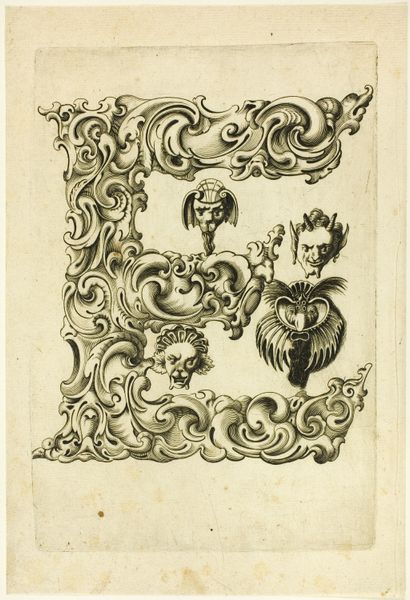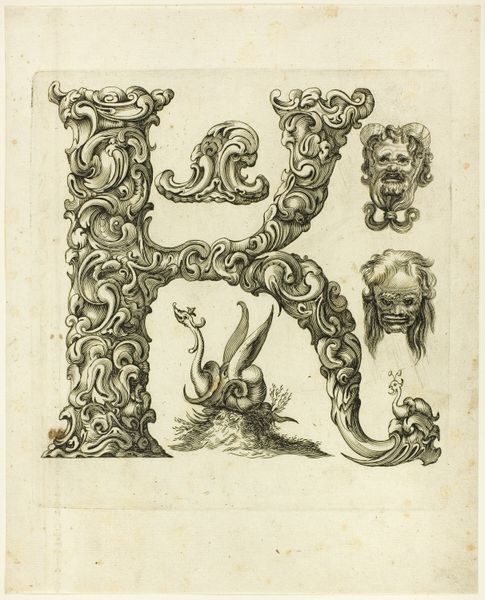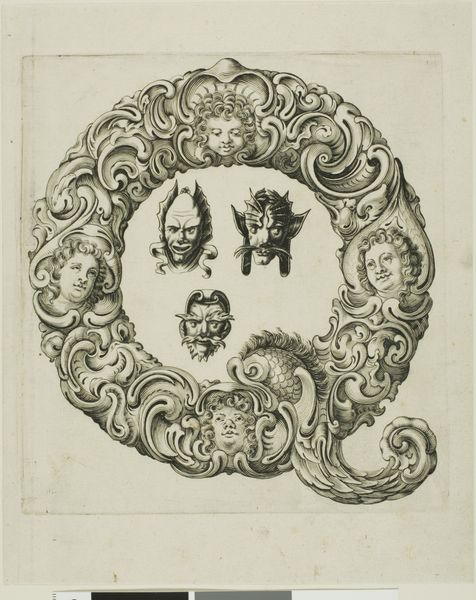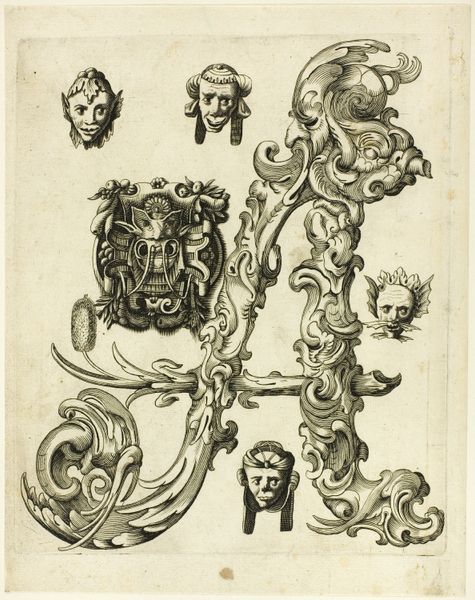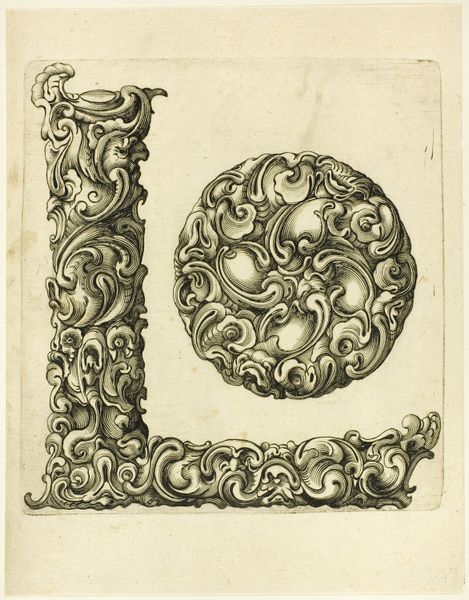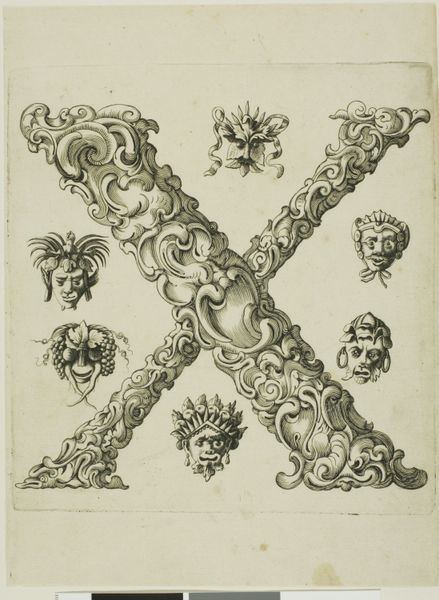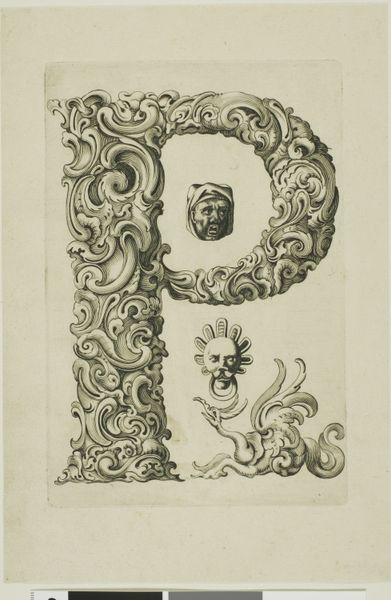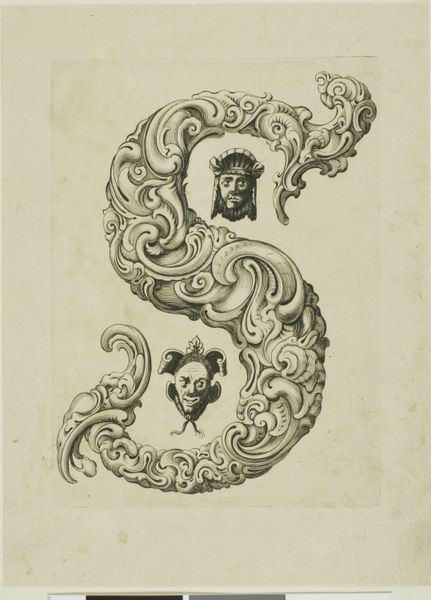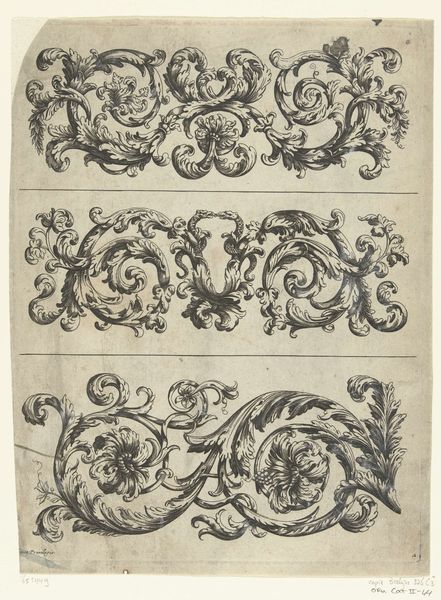
drawing, print, paper, engraving
#
drawing
#
germany
#
baroque
# print
#
paper
#
form
#
geometric
#
decorative-art
#
engraving
Dimensions: 243 × 199 mm
Copyright: Public Domain
Curator: We're looking at "Letter R," a drawing, or rather an engraving, by Peter Aubry, dating back to 1630. Editor: My first thought is that this “R” is anything but simple. There’s an exuberant complexity to the form; it's visually dense and, dare I say, playfully grotesque. Curator: That assessment isn't far off! It's characteristic of the Baroque period's decorative arts in Germany. These ornamental letters, especially, are laden with symbolism. You have human faces interspersed with flora and fauna. Editor: The faces certainly catch the eye. Are they meant to represent something specific, or do they act as part of a broader symbolic language? I mean, each face has unique expression, from jovial to sinister. The medium itself seems to demand detailed execution. Curator: Precisely. Each of those faces alludes to classical and mythological figures; recall that faces, or masks, were used for theatrical drama or courtly performance. The letterform is not merely functional; it’s an exercise in cultural memory, recalling stories, historical associations that would resonate with audiences familiar with allegorical art. Editor: So, the viewer is meant to decode layers of meaning embedded within the curves and the carefully etched details? There’s definitely an interplay of positive and negative space. Notice the controlled lines and the texture! Curator: Absolutely. Each curve and face is positioned purposefully, prompting contemplation beyond the surface-level recognition of a letter. It is as if this artwork demands active participation from the audience to resurrect and engage in forgotten traditions. Editor: I see that tension between restraint and excess, typical for the Baroque. Its deliberate complexity makes it feel more imposing than merely decorative. This pushes against conventional interpretations. Curator: In many respects, yes. Through form, this seemingly straightforward ‘R’ opens doors to intricate cultural understanding. The use of traditional iconography in conjunction with the baroque structure helps us question visual literacy then and today. Editor: Well, now, when I look at it, it is a striking display that highlights the visual density during the period but prompts some compelling formal inquiries. Curator: Exactly! A dive into an ocean of visual encoding that transcends linguistic and historical divides.
Comments
No comments
Be the first to comment and join the conversation on the ultimate creative platform.


